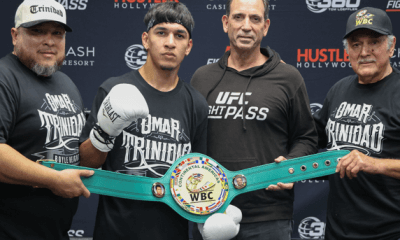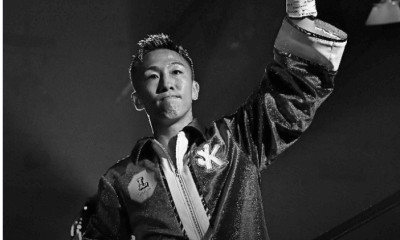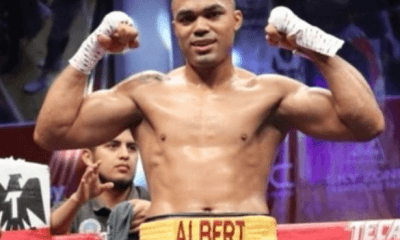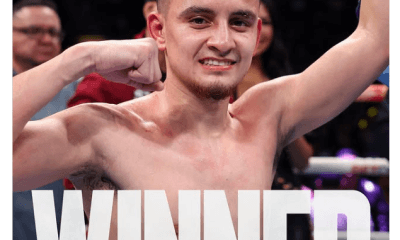Featured Articles
New Champ Teofimo Lopez Continues Upstaging Bigger Names; Lomachenko Next?
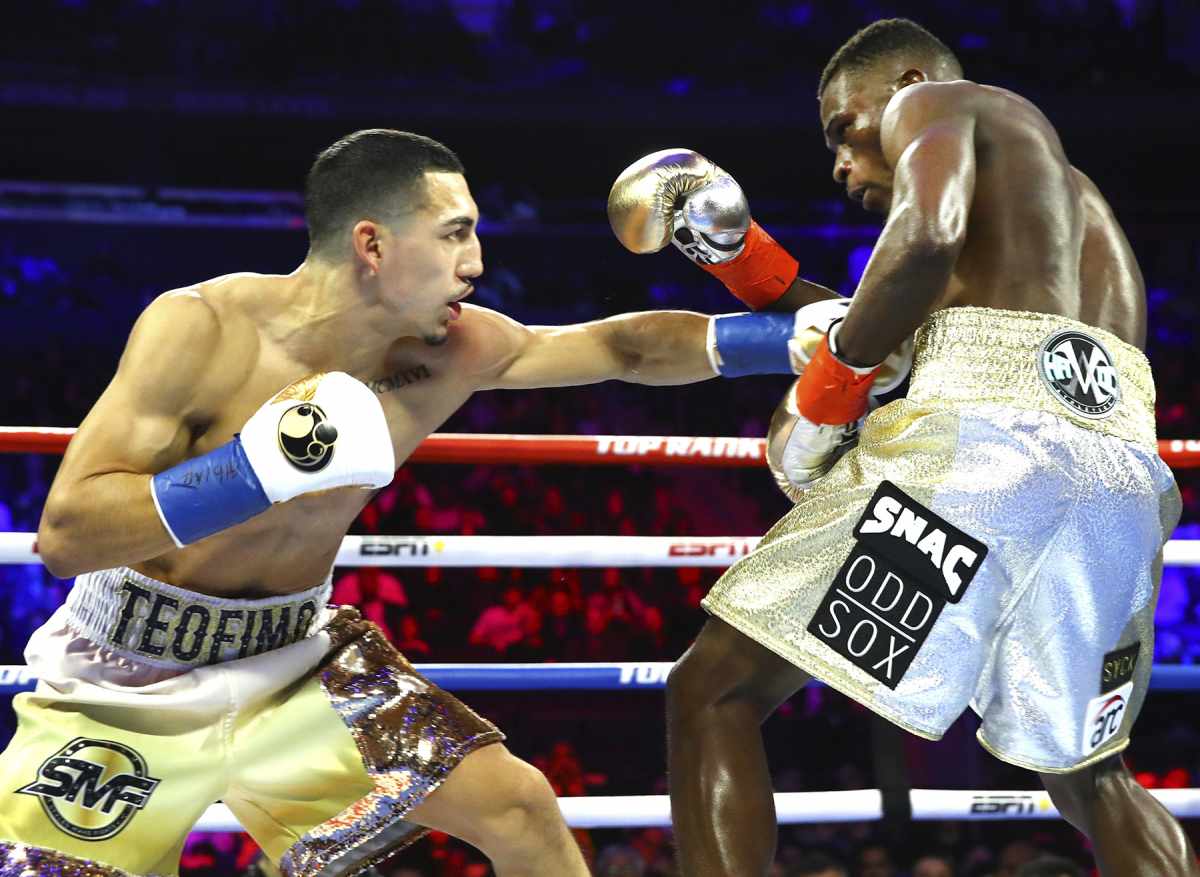
New Champ Teofimo Lopez Continues Upstaging Bigger Names; Lomachenko Next?
NEW YORK – It is standard practice in all sports, not just boxing, that any phenom who draws growing attention is soon said to be the “new” someone or other, a stylistic successor to a superstar who previously set impossibly high standards of excellence. Such comparisons can place enormous pressure on the flavor-of-the-moment upstart, who has to deal with the long shadow cast by the legendary figure to whom he has been unfairly linked, in addition to the already-difficult task of establishing himself on his own terms.
Consider the plight of such OK-but-not-great heavyweights as Jimmy Ellis, Greg Page and Larry Donald, all of whom patterned themselves as wannabe Muhammad Alis both in and out of the ring, and in each case came up far short of replicating the one-of-a-kind original.
The iconic figure to whom newly crowned IBF lightweight champion Teofimo “The Takeover” Lopez has been most frequently compared is all-time great Roberto Duran. It is far too early in the 22-year-old Lopez’s career for such assessments to have any real validity, but what happened here Saturday night in Madison Square Garden, and quite possibly might happen next spring, could serve to legitimize the Brooklyn-born knockout artist’s chances of becoming something so much more than just another flash in the pan.
Not only did Lopez (15-0, 12 KOs) electrify the on-site crowd of 10,101 and an ESPN viewing audience with what basically was a one-punch, second-round dethronement of the formidable Richard Commey (29-3, 26 KOs), he essentially upstaged the ostensible star of the show, WBO welterweight titlist Terence “Bud” Crawford (36-0, 27 KOs), who retained that belt with a ninth-round stoppage of Egidijus Kavaliauskas (21-1-1, 17 KOs). And there are more than a few knowledgeable observers of the sweet science who consider Crawford to be the best pound-for-pound fighter on the planet.
What makes Lopez’s latest tour de force so impressive is not the manner in which he destroyed Commey, who is arguably the finest fighter to come out of Ghana since Hall of Famer Azumah Nelson, but the fact that it was witnessed from ringside by WBC/WBA/WBO lightweight ruler Vasiliy Lomachenko (14-1, 10 KOs), whose next outing could pair him with the ultra-self-confident kid for the undisputed 135-pound title. There are those who would say that Lopez is still too inexperienced to test himself against Loma, another established king of the ring with ample support as the sport’s pound-for-pound best, but impatience has always been a distinguishing feature of the very young, who want what they want and want it now.
“Ya’ll know who I want to fight next,” Lopez, in a not-so-veiled reference to Lomachenko, said after he separated Commey from his senses with a crushing overhand right that sent the Ghanaian crashing to the canvas early in round two. A fighter’s natural competitive instincts enabled a discombobulated Commey to lurch to his feet on unsteady legs, and those same instincts sent him backing into the ropes for support, as if there was any to be had. Lopez knew just what to do, boring in and taking target practice against an opponent incapable of fighting back until referee David Fields stepped in and acknowledged the inevitable after an elapsed time of 1 minute, 13 seconds.
Lomachenko is just as cocksure in his assessment of his abilities as Lopez is in his, and he said, sure, he’d be open to a clear-the-decks showdown with Lopez, a match that seemingly could be made easily since both fighters are promoted by Top Rank and thus regularly appear on ESPN telecasts.
“We want all the titles,” Lomachenko said of a scrap Top Rank CEO and founder Bob Arum said he is just as anxious to make as the would-be combatants. “Now (Lopez) is a world champion and interesting for me, because he has a title. I think yes (that his next bout will be against Lopez). I will prepare for this fight.”
It could well be that Lopez, who won his weight class at the 2015 U.S. Olympic Boxing Trials but was inexplicably left off the American squad, obliging him to represent his father’s birth country of Honduras in Rio de Janeiro, is getting too far ahead of himself in pressing for an immediate go at Loma. Canelo Alvarez, then only 23, was not nearly as well-rounded a fighter as he is now when he took on Floyd Mayweather Jr. on Sept. 14, 2013, losing a unanimous decision. The more prudent move might have been for Team Canelo to wait a couple of years for the Mexican sensation, another claimant to the much-debated pound-for-pound throne, to gain more seasoning, but, again, youth always feels it must be served sooner rather than later.
Promoter Lou DiBella, who will be inducted into the International Boxing Hall of Fame on June 14, had a vested interest in the Commey-Lopez fight as he has Commey, but he couldn’t help but be impressed by what he’d seen of the winner.
“He’s got dynamite in his fists,” DiBella said of Lopez. “All you can do is just shrug your shoulders and say, `OK.’ That kid is a very athletic offensive force. Richard got caught with that dynamite and that was that. The fight was over when that big punch landed.”
But there is more to Lopez’s evolution as a potential megastar than a big punch. Style points count at the box office as much as talent, and DiBella said Lopez “has charisma coming out the ying-yang. When you have that kind of arsenal, you have a chance against anybody, including Loma.”
Lopez certainly understood – again – that this most recent occasion to shine came on the same night as the Heisman Trophy presentation in New York City. He celebrated another star turn by quickly tugging on an LSU football jersey bearing the No. 9 worn this season by Heisman-winning quarterback Joe Burrow, a virtual replay of what Lopez did on another Heisman night in 2018, when he needed only 44 seconds to demolish veteran contender Menard Menard at the Theater at Madison Square Garden, whereupon he produced a red Oklahoma jersey with the No. 1 worn by Sooners quarterback Kyler Murray.
It might be said that Teofimo Lopez is now the quarterback of his own destiny. And should he do unto Loma what he did to Menard, Commey and more than a few others, maybe those way-too-early comparisons to Duran won’t seem quite so wildly exaggerated.
Circumstances making the possibility of a Lomachenko-Lopez showcase event being made without fuss or bother must be at least a bit irksome to Crawford, who, despite still being at the top of his game, is 32 and possibly aware that his window of opportunity for making the high-visibility, high-paying legacy fights he desires must soon begin to close, at least a little.
No disrespect to Kavaliauskas, an Oxnard, Calif.-based Lithuanian whose full name is so long that for brevity’s sake it was shortened to his nickname, “Mean Machine,” on all promotional materials, but he is not on the more exalted tier as WBC/IBF welterweight champion Errol Spence Jr., WBA welter titlist Manny Pacquiao and former division champs Keith Thurman, Danny Garcia and Shawn Porter, all of whom are controlled by Premier Boxing Champions, Matchroom Sport, DAZN or Fox/Showtime. That is a reality that, whether fight fans like it or not, diminishes the likelihood of their ever sharing the ring with Crawford.
Nor is Crawford, an introvert by nature indisposed to the sort of chest-thumping that is second nature to others, apt to brag and preen his way into a brighter spotlight. He does most of his talking with his fists, and they again made a compelling argument as to his exceptional skill level, if perhaps at a lower audible than, say, Ali, Mayweather or even the evolving Lopez.
Deftly switching from southpaw to orthodox and back again, as is his wont, Crawford – a native of Omaha, Neb., who was cheered on by an actual Heisman Trophy winner, Nebraska’s Johnny Rodgers, who made his way to the Garden after appearing at the Heisman presentation – probed for weaknesses in Mean Machine’s defenses before turning up the heat in the fifth round, when, from an orthodox stance, he registered the first of his three knockdowns with a straight right. He put his game opponent down twice more in the ninth, prompting referee Ricky Gonzalez to wave a halt to the proceedings after an elapsed time of 44 seconds. At the time of the stoppage, Crawford led 79-72 on two of the three official scorecards and by 78-73 on the other.
“I thought I’d have to entertain ya’ll for a little bit,” Crawford said of his tactical delay before pressing the issue. “He’s a strong fighter, durable, and I thought I’d give the crowd something to cheer for.”
Arum suggested that, standard roadblocks to the contrary, Crawford’s next opponent could be Shawn Porter, but that hardly seems as inevitable at this point as Lomachenko-Lopez. To say Crawford is frustrated at being fenced off from the kind of competition that could certify his belief that he is an all-time great would be an understatement.
“I’ll fight anybody. I’ve been saying that for I don’t know how long,” he said, somewhat ruefully. “I’m not ducking anyone on the PBC side or Top Rank platform. I want to fight all the top guys.”
In the third fight of the card televised by ESPN, two-time Olympian Michael “Mick” Conlan (13-0, 7 KOs), the Northern Island representative who believed he was screwed out of a medal in Rio on a controversial decision that went to Russia’s Vladimir Nikitin, and responded to the verdict by taking off his gloves and giving obscene single-finger expressions of his discontent to Russian president Putin, who was seated at ringside, got his revenge of sorts on a wide, 10-round unanimous decision over Nikitin (3-1, no KOs).
“I needed to right this wrong,” Conlan said. “Full credit to Nikitin, who fought his heart out. There’s no bad blood. There never was. Now, we can put this chapter of my career behind me.”
Photo credit: Mikey Williams for Top Rank
Check out more boxing news on video at The Boxing Channel
To comment on this story in The Fight Forum CLICK HERE
-

 Featured Articles3 weeks ago
Featured Articles3 weeks agoThe Hauser Report: Zayas-Garcia, Pacquiao, Usyk, and the NYSAC
-
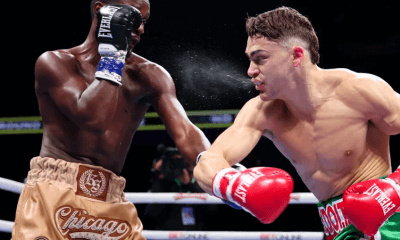
 Featured Articles2 weeks ago
Featured Articles2 weeks agoOscar Duarte and Regis Prograis Prevail on an Action-Packed Fight Card in Chicago
-
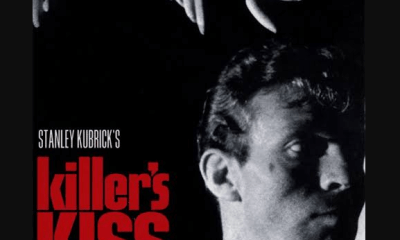
 Featured Articles1 week ago
Featured Articles1 week agoThe Hauser Report: Cinematic and Literary Notes
-
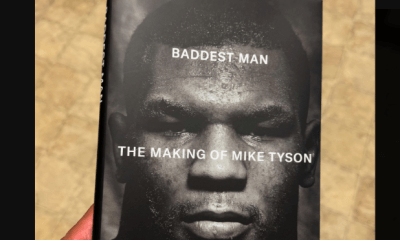
 Book Review4 days ago
Book Review4 days agoMark Kriegel’s New Book About Mike Tyson is a Must-Read
-
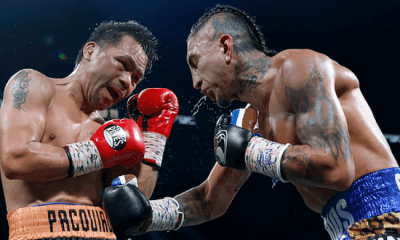
 Featured Articles4 weeks ago
Featured Articles4 weeks agoManny Pacquiao and Mario Barrios Fight to a Draw; Fundora stops Tim Tszyu
-
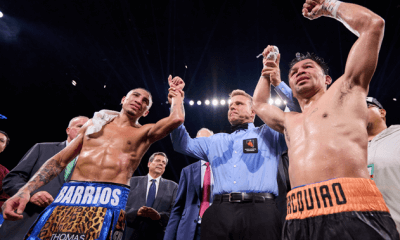
 Featured Articles4 weeks ago
Featured Articles4 weeks agoArne’s Almanac: Pacquiao-Barrios Redux
-

 Featured Articles3 weeks ago
Featured Articles3 weeks agoRemembering Dwight Muhammad Qawi (1953-2025) and his Triumphant Return to Prison
-
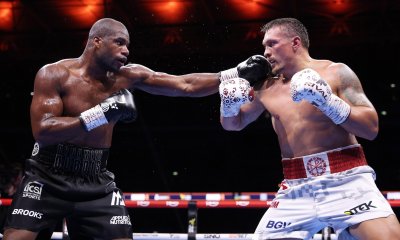
 Featured Articles4 weeks ago
Featured Articles4 weeks agoOleksandr Usyk Continues to Amaze; KOs Daniel Dubois in 5 One-Sided Rounds


